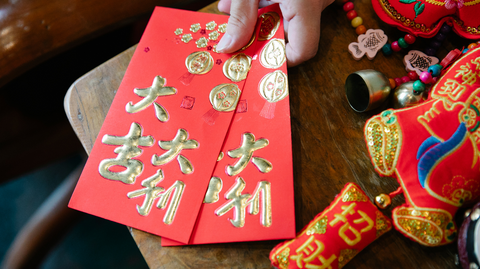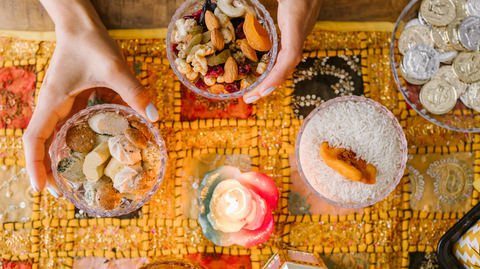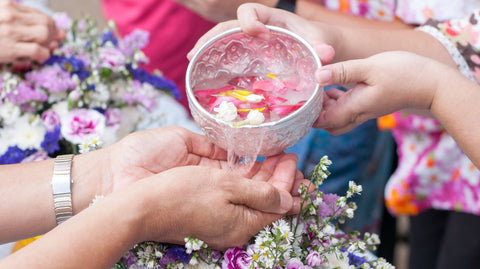The advent of a new year is a reason for jubilant festivities and the initiation of novel opportunities. On this occasion, individuals gather, pay visits to one another's residences, and don elegant attire to exchange greetings and commemorate.
Introducing the extraordinary Gregorian calendar—a true marvel of precision that has captured the hearts and minds of people across the globe. This amazing calendar is the pinnacle of timekeeping due to its unparalleled accuracy. Savor the delight and enthusiasm of New Year's Day, an international celebration that falls on the first day of January. Almost every nation on the planet celebrates this historic occasion as we say goodbye to the past and embrace the future.
Why is the New Year celebrated?
With a calendar that has 364, or 365, days in a year, this special day heralds the start of countless opportunities and new beginnings. Come celebrate as we start a new chapter together and embrace the spirit of renewal.
Discover the magic of New Year's festivities around the world, as many cultures come together to form a rich tapestry of customs and traditions. Get ready for an engrossing voyage as we explore the fascinating realm of New Year's Eve festivities throughout different countries. Get ready for an enthralling tour of fascinating traditions and thrilling activities that will captivate you.
Discover the different New Year celebrations observed globally! Although January 1st is the most often observed New Year's Day throughout the majority of nations, there are a plethora of other fascinating dates on which many cultures joyfully celebrate the start of a new year.
New years in different countries
Chinese New Year
The Spring Festival, also known as Lunar New Year, is observed for a duration of fifteen days by a significant number of individuals throughout Asia, predominantly in China but also in countries such as Indonesia and Vietnam.

The term "Spring Festival" is used to denote the new year's arrival, which marks the conclusion of the most frigid part of winter and instills a sense of anticipation for the onset of spring.
Israel's Rosh Hashanah
Rosh Hashanah, often known as "Head of the Year," is an annual Jewish celebration observed worldwide in September or October to mark the beginning of the new year.
Celebrating Rosh Hashanah provides an excellent opportunity to embrace the arrival of a new year and contemplate the events of the previous twelve months. During the initial two days of Tishrei, which is the seventh month of the Hebrew calendar, it is enthusiastically embraced.
During the Jewish observance of Passover, individuals typically consume dates, leeks, beets, and pomegranates while also engaging in the practice of playing the shofar, which is a ram's horn, within the synagogue.
There is significance to every dish prepared on New Year's Eve in different countries. As one example, a common Jewish practice is to eat apples coated in honey before praying.
Iran's Third Nowruz
Nowruz, meaning "new day," is a springtime festival celebrated for thirteen days by an estimated seventy-five million Iranians and thirty million Afghans.
One of the oldest festivities in human history, it has been observed for around four thousand years and is also called the Persian New Year.
An Iranian family gathers to exchange gifts, Sehi explained. "Shopping is a major event, and wearing new clothes is a must, so it is almost like Black Friday [in the United States]."

India's Pahela Baishakh
In April, the Bengali community celebrates Pahela Baishakh. The festivities begin on the first day of Baishakh, the Bengali calendar's first month.
In contrast to the Sikhs' celebrations, which include singing, dancing, and recitations from their holy book, the Bengalis hold feast days and cultural events.
New year celebrated around world
The Danish
Danes celebrate New Year's Day by pounding empty dishes and drinks on the doors of loved ones, even though this is considered a negative omen in some cultures. The purpose of this ritual is to drive away evil spirits. In the hopes of attracting good fortune, some even jump from chairs at midnight while standing on them.
The Spanish
On the first day of the new year, the Spanish do things a little differently, thus explaining why the new year is celebrated. Twelve grapes, one for each hour of the new year, are traditionally consumed at midnight on New Year's Eve. For the next year, each grape stands for a fortunate month. Every one of your dreams will come true if you can swallow them all.
Britain and Ireland
Irish folks get down to the business of cleaning every inch of their homes, yards, and vehicles in anticipation of New Year's Day. As the clock ticks towards midnight, it is customary for them to hurl bread at the walls in an effort to fend off evil spirits.
The USA
During Año Neuvo, it is customary to welcome fresh starts. As a part of celebrating New Year's Eve in different countries, the USA commemorates by opening the front entrance and tossing buckets of water out the window. As a traditional practice, it is customary to toss coins onto the ground and then retrieve them, symbolizing a hopeful future.
Japan
Japan rings all of its bells 108 times on New Year's Eve, also known as Oshogatsu. Since the Buddhists believe that a new year should be a time of purification, this makes sense. Japan hosts a three-day festival to commemorate the occasion with family and friends over delicious food and games.
Thailand
The famous Thai water event Songkran kicks off the traditional Thai New Year celebrations. Smearing each other with gray talc is a traditional practice among Thais during Songkran. While the water washes away all transgressions, the talc symbolizes the transgressions of the past year. Candles and incense are lit at shrines throughout the three-day event.

Different New Year Celebrations with Traditions
"Auld Lang Syne" and the ripping up of the house in Scotland
Hogmanay is an annual festivity that commences on December 30th and lasts until New Year's Day in Scotland. The predominant Hogmanay tradition is "first footing," whereby individuals visit friends and neighbors, typically carrying a symbolic gift. This practice varies from region to region within the country.
At midnight on New Year's Eve, people assemble to sing "Auld Lang Syne," a worldwide favorite with its Scottish roots, but the redding of the home is the most significant custom. In essence, this is a thorough cleaning of the entire house, beginning with the cabinets and ending with the front door. The hearth is one area that gets special attention; the ashes are swept away so that the new year can begin with a clean slate for the whole family.
Brazil: Donning nothing but white as they leap into the water
The custom of wearing white on the eve of the new year has deep historical origins in Africa. On this night, Brazilians honor Lemanjá, goddess of the sea, at the Festa de Lemanjá. At exactly midnight, the whole ceremony comes to a head when the white-clad participants rush into the water to leap seven waves. Every wave and jump represents a distinct orixá, or god, that the swimmer is addressing. Put them in the same category as New Year's resolutions or dreams.
Germany: Embracing the Future Through Melting
It is a traditional practice in many parts of German-speaking Europe, Finland, Bulgaria, the Czech Republic, and Turkey to heat little pieces of lead, drop them into cold water, and then use the shapes they create to foretell the new year. If a ball shapes up, for instance, good fortune will smile upon you. Tiny figures to melt are now included in kits throughout German-speaking nations.
Spain: On the hunt for the multi-nosed guy
The final day of the year brings a unique character to the Catalonia region in northern Spain. The man with many noses, also known as L'home dels nassos, fulfills wishes for those lucky enough to find him. His number of nostrils equals the number of days left in the year. As part of this Spanish tradition, kids are supposed to search for him on December 31st, not realizing that he's only got one nose left and is thus difficult to find.
Japan: Going to a shrine to get fortunate charms
Goodness is the central theme of Japanese New Year's celebrations. It is customary to attend the local temple on Shōgatsu (fresh year) to trade in the lucky charms (omamori) from the previous year for fresh ones. Following this, there will be a traditional New Year's feast, including prawns (said to bring longevity) and herring roe (said to increase fertility).
In Conclusion
The new year across the globe, celebrated by different countries, has different traditions for ringing in the new year. If you want to succeed in international business, you must learn to recognize, accept, and celebrate these varied practices.
















